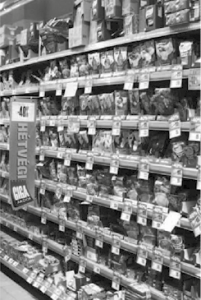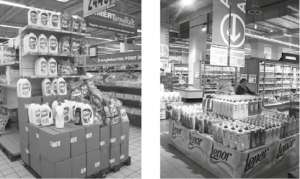Magazine: Comprehensive survey on shopping habits
In 2014 POPAI Hungary Association conducted a representative shopping habits survey, with the involvement of 23,000 shoppers in 6 hypermarkets. The study’s objective was to give relevant information on consumer decision making to companies in the FMCG sector. Three methods were used: 902 customers filled out questionnaires, the eye tracking technology of Tobii Technology was used with 224 shoppers and 21,772 customers were observed in various parts of the store. The typical Hungarian hypermarket customer has secondary school qualifications, lives in a 2-3 member household and has HUF 140,000-280,000 to spend a month.

They visit hypermarkets 3-4 times a week, where they plan to purchase 4-5 products per occasion. Finally they put 8-9 items in their basket, which cost about the same as the sum originally planned to be spent. They have a loyalty card which they use. Both primary and secondary product placements were examined in the study. Data showed that shoppers primarily take products from the main place where they are displayed. 11.1 percent of products ended up in the baskets from secondary placement – 65.8 percent of this proportion from a pallet or standing display. The best selling secondary placement items were fruit juice, soft drinks, laundry detergents, butters and margarines.

On average only every fourth secondary product placement is noticed by customers and they only spend 0.9 second looking at them! One of the survey’s most important findings was that the in-store location and the product type displayed are the most important factors in noticing items in secondary placement. Other factors don’t affect whether the product is noticed or how long it is being looked at. In the secondary placement category pallets displayed in the main aisle and gondola ends are the absolute winners, displaying promotional or seasonal products. The study also made it clear that in the case of both primary and secondary placement shoppers glance at the product first, followed by other goods or the price – communication materials receive little attention. //
Related news
Private labels make plant-based alternatives cheaper
🎧 Hallgasd a cikket: Lejátszás Szünet Folytatás Leállítás Nyelv: Auto…
Read more >KPMG CEO Outlook 2025: replanned trust
🎧 Hallgasd a cikket: Lejátszás Szünet Folytatás Leállítás Nyelv: Auto…
Read more >Generations X and Y would be happy to cook more
🎧 Hallgasd a cikket: Lejátszás Szünet Folytatás Leállítás Nyelv: Auto…
Read more >Related news
(HU) A nap mondása
🎧 Hallgasd a cikket: Lejátszás Szünet Folytatás Leállítás Nyelv: Auto…
Read more >(HU) A gépek a műtéteknél és az idegpályák pótlásánál is szerepet játszhatnak
🎧 Hallgasd a cikket: Lejátszás Szünet Folytatás Leállítás Nyelv: Auto…
Read more >(HU) Kautzky Szemők Adrienn: Vigyázzunk a sarlatánokkal
🎧 Hallgasd a cikket: Lejátszás Szünet Folytatás Leállítás Nyelv: Auto…
Read more >







